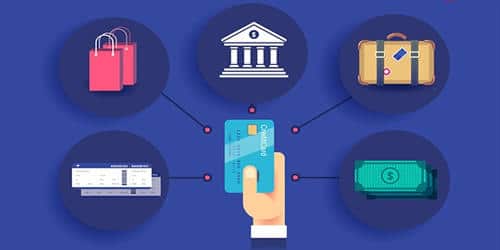E-banking implies the provision of banking products and services through electronic delivery channels. It permits anytime, anywhere, and anyhow banking and offers easy, faster, convenient, low-cost banking services around the clock.
E-Banking as the wave of the future, provides enormous benefits to consumers in terms of cost of transactions, either through the internet, telephone, or other electronic delivery channels. There are various types of e-banking services like PC banking, SMS banking, Mobile Banking, Tele Banking, etc. Here is the general information of entire E-banking:
PC Banking – Using PC banking or home banking customers can use their personal computers at home or at their office to access their accounts for transactions. Basically, there are two types of PC banking.
The first type is online banking, in which bank transactions are conducted within closed networks. The customer needs specialized software provided by his bank.
The second type is Internet banking, which permits the customer to conduct transactions from any terminal with access to the Internet. Internet banking would free both bankers and customers of the need for proprietary software to carry on with their online banking transactions. For instance, one may use a computer to view his account balance, request transfers between accounts, and pay bills electronically.
SMS Banking – The SMS banking service is an information service of the Bank, which enables the holders of payment cards issued by the Bank to receive SMS information on the statement and movements on the account, by cell phone. The Bank sends messages for movements on the payment card accounts, by transaction, to the cell phone of the service user, stated in the application for use of the SMS banking.
Mobile Banking – Actually mobile banking is a variation of Internet banking. Mobile banking is a good example of how the lines between the various forms of e-banking are becoming gradually blurred. Due to the new transmission technologies such as WAP (Wireless Application Protocol), portable terminal like mobile phones, International Journal of Scientific and Research Publications, personal digital assistant (PDA) or small hand-held PCs are providing bank customers with access to the Internet and thus paving the way to Internet banking. It assures immense flexibility and makes the financial services independent of time and place.
Automated Teller Machines (ATM) – An automated teller machine or automatic teller machine (ATM) is an electronic computerized telecommunications device that allows a financial institution’s customers to directly use a secure method of communication to access their bank accounts, order, or make cash withdrawals (or cash advances using a credit card) and check their account balances without the need for a human bank teller. Many ATMs also allow people to deposit cash or cheques, transfer money between their bank accounts, top-up their mobile phones’ pre-paid accounts, or even buy postage stamps.














